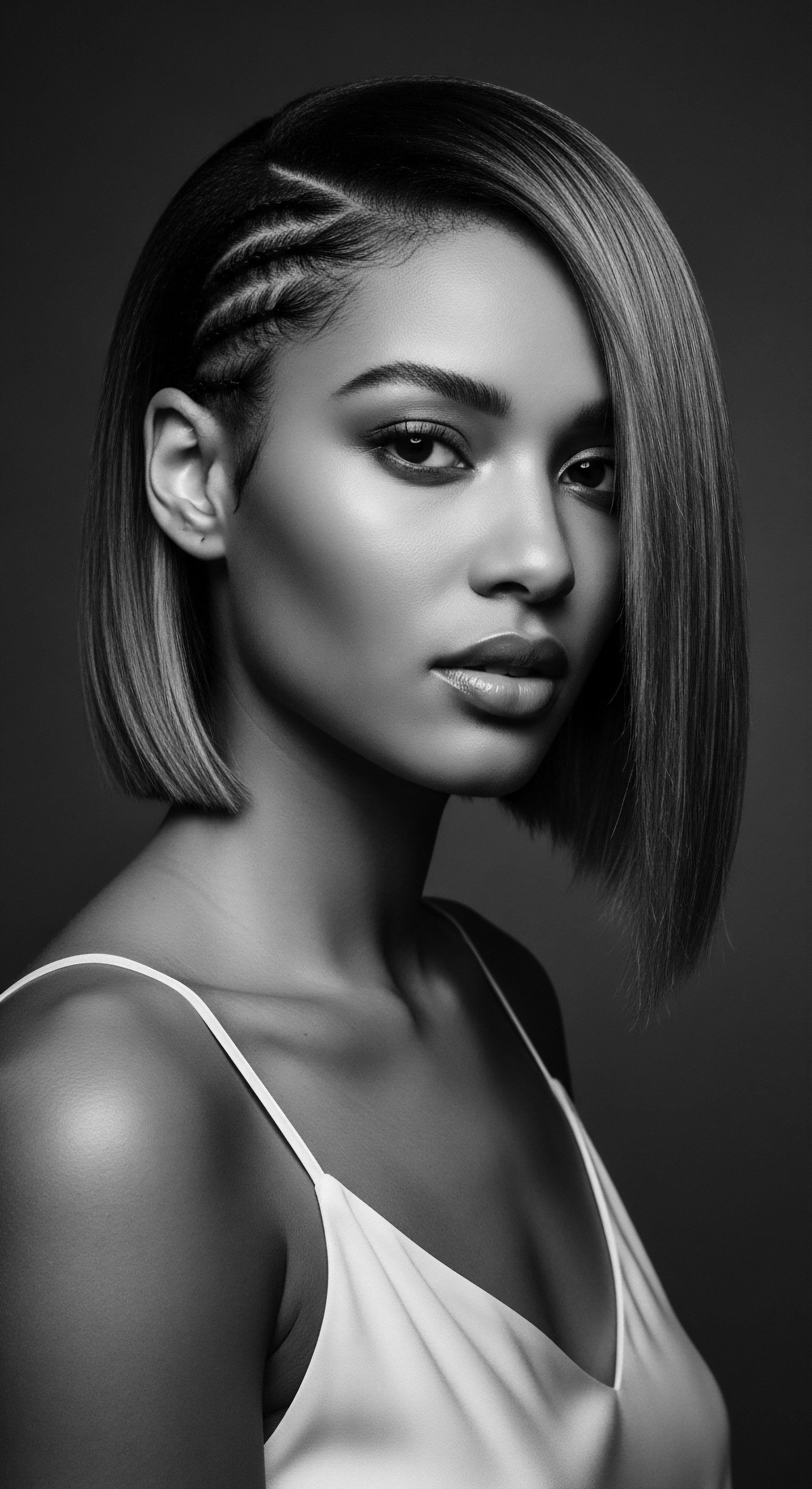
Roots
Have you ever paused to consider the silent chronicles held within each coil, each kink, each curve of textured hair? For centuries, across the diverse landscapes of Africa, hair has never been a mere adornment. It has served as a profound testament to identity, a living archive of community, and a spiritual conduit. Ancient braids, those artful intertwinings of strands, were more than stylistic choices; they were declarations, maps, and prayers etched upon the scalp.
These intricate designs speak of a heritage so deep, its roots reach into the very earliest human civilizations, tracing back beyond recorded time to moments when the human hand first learned to shape its world. The story of African braids is undeniably the story of textured hair itself, a narrative of resilience, innovation, and an unwavering connection to ancestral practices.
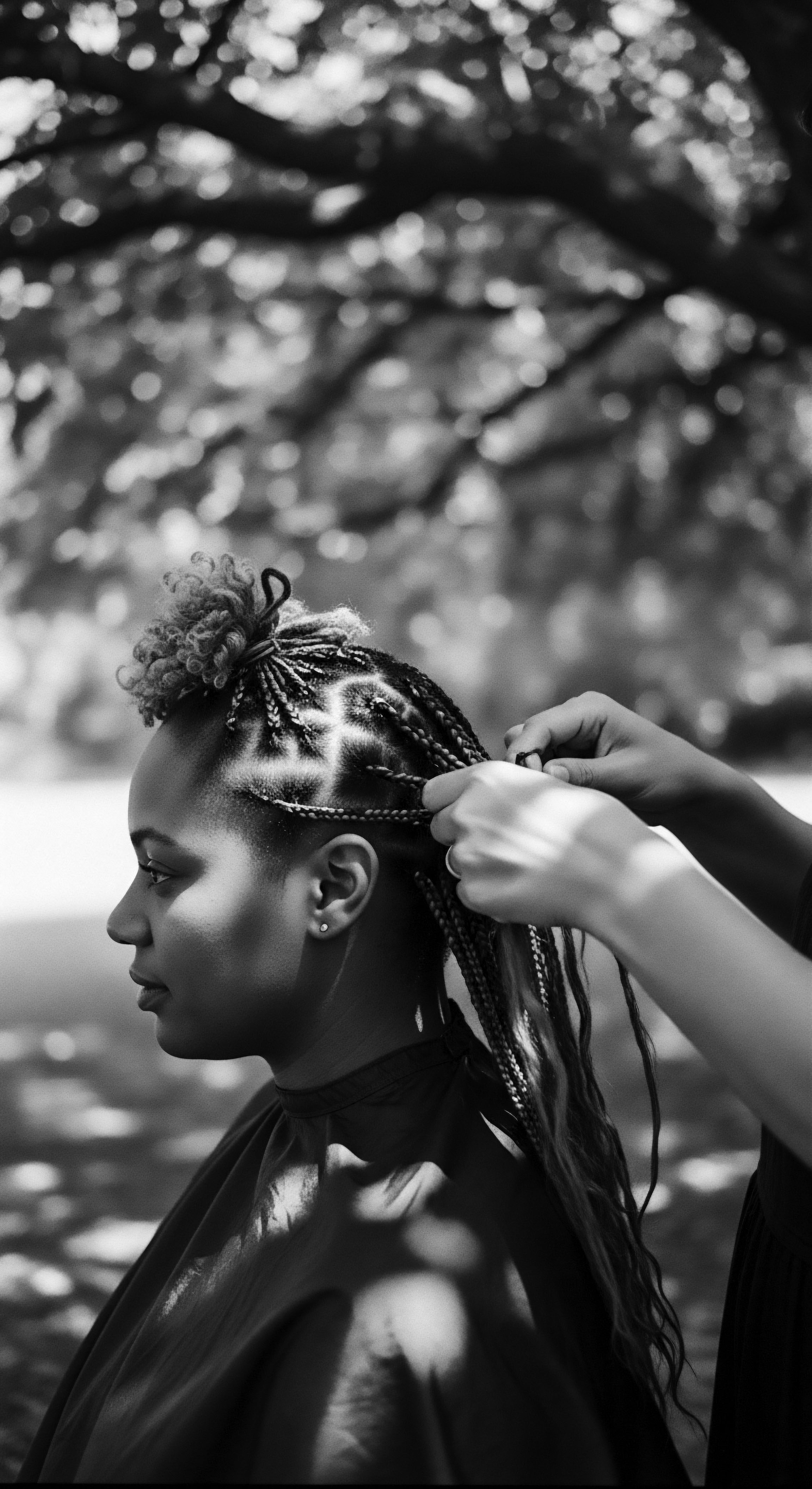
Textured Hair’s Ancient Blueprint
To truly appreciate the significance of ancient braids, one must first understand the unique biological architecture of textured hair. Unlike the smoother, often cylindrical shafts of other hair types, African textured hair typically grows from elliptically shaped follicles, resulting in a strand that coils and kinks. This structure, while sometimes presenting unique care considerations, is a marvel of natural engineering. It provides an inherent spring, a volume, and a resilience that has been both celebrated and, at times, misunderstood across human history.
The natural disposition of this hair type lends itself remarkably well to practices such as braiding, coiling, and twisting, techniques that enhance its inherent properties and protect its delicate structure. From an ancestral perspective, this very physiology was not something to be altered or straightened, but rather a canvas for expression and a protector against environmental elements.
Ancient African braids were more than aesthetic expressions; they were sophisticated communicative tools and markers of identity, deeply embedded in the physiology and social fabric of textured hair heritage.
Scholars note that evidence of hair braiding dates back as far as 3500 BC in Africa, with various styles serving as a form of visual language. This means that for millennia, African communities understood and honored their hair’s distinct properties, developing grooming techniques that worked in harmony with its natural form. These practices preserved the hair while conveying complex social information.

Decoding the Visual Language of Braids
In many ancient African societies, hair became a complex system of communication. A person’s hairstyle could instantly reveal their Tribe, Marital Status, Age, Wealth, Religion, or even their Social Rank within the community. The meticulous detail involved in creating these styles, often taking hours or even days, underscored their importance.
It was a communal act, a time for sharing stories, wisdom, and strengthening social bonds. Women would gather, often under the shade of a large tree, and engage in the patient art of braiding, transforming strands into statements.
Consider the Himba people of Namibia, where hair traditions hold significant weight even today. Their elaborate styles, often coated with a paste of butter, ochre, and aromatic resins known as ‘otjize,’ reflect age and marital status. A young woman might wear her dreads tied back to signify her readiness for marriage. This living tradition offers a powerful glimpse into the historical depth of hair as a marker of life’s passages.

How Did Braids Act as a Social Map?
The specific patterns of braids held meaning, like an unspoken dialect. A particular pattern might be unique to a certain ethnic group, distinguishing them from neighboring communities. For example, specific cornrow patterns could indicate tribal belonging.
The complexity and adornment of a style sometimes correlated directly with an individual’s status or prosperity. The more elaborate the style, the more time and resources it demanded, thus signaling a person of means or high standing.
- Tribal Affiliation ❉ Specific patterns identified an individual’s ethnic group.
- Social Standing ❉ The intricacy and adornment, such as beads or cowrie shells, could indicate wealth or rank.
- Marital Status ❉ Certain styles announced whether a woman was single, married, or widowed.
- Age and Life Stage ❉ Hairstyles marked rites of passage, like a girl’s transition to womanhood.
- Spiritual Connection ❉ Some patterns or adornments were believed to connect individuals to ancestors or the divine.
The very act of creating and wearing these styles was a cultural practice, embodying ancestral knowledge of hair care and societal structure.
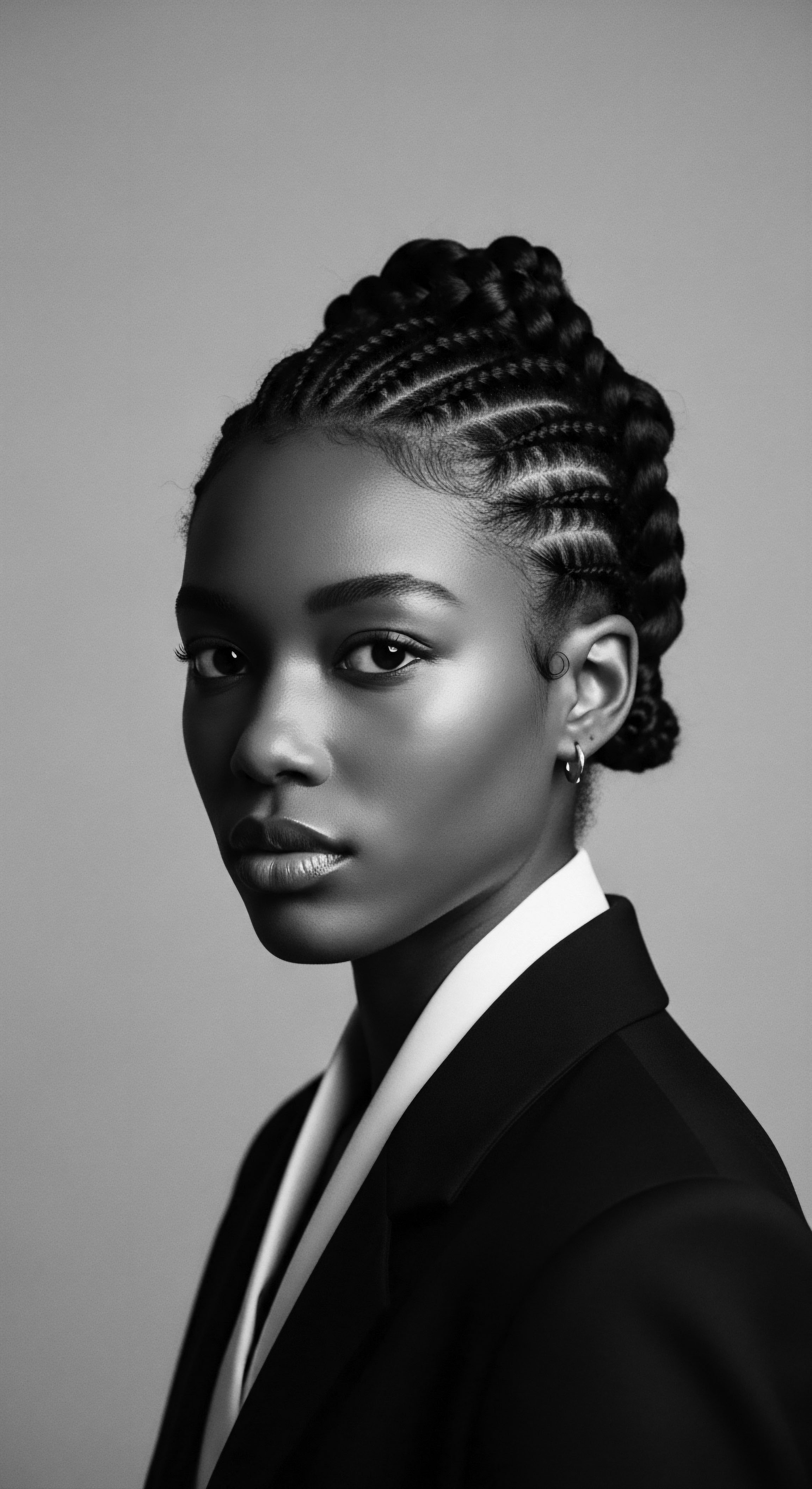
Ritual
The ritualistic aspect of ancient African braiding extended far beyond mere aesthetics; it was a holistic engagement with self, community, and the spiritual realm. These practices were not isolated events but deeply interwoven into the daily rhythms of life, reflecting a profound respect for hair as an extension of one’s identity and connection to heritage. The care and styling of hair became a sacred act, a testament to inherited wisdom passed down through generations.
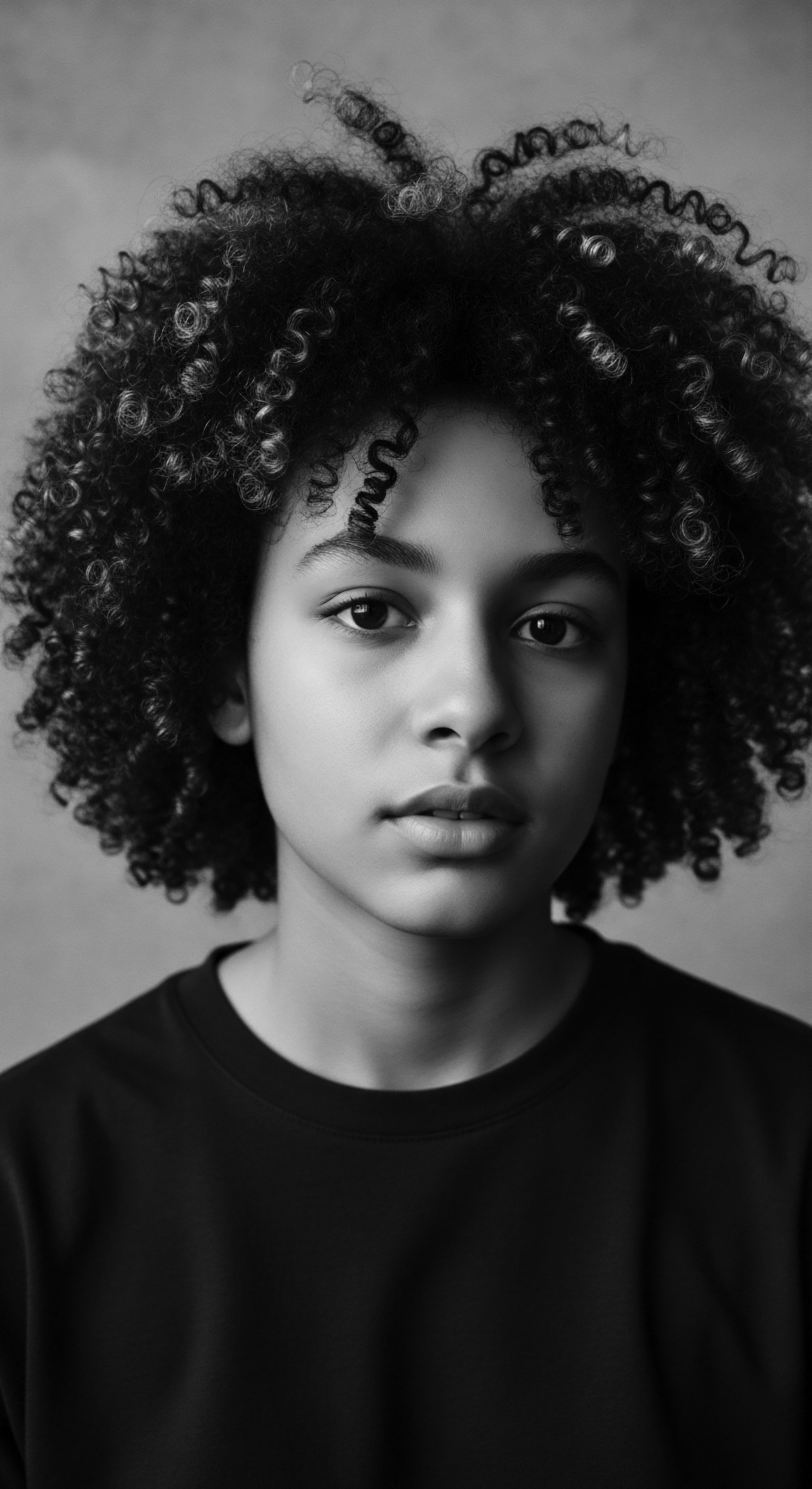
The Sacred Act of Styling
For many African communities, the head was considered the most elevated part of the body, a conduit to the divine and a seat of spiritual power. Hair, growing from this sacred space, thus held immense spiritual significance. Braiding sessions were communal, often multi-day affairs, fostering bonds and transmitting oral histories.
It was during these moments that stories of creation, of lineage, and of communal values were shared, making the act of braiding a living classroom. Mothers taught daughters, aunts instructed nieces, and a collective repository of knowledge was preserved.
Braiding in ancient African societies was a communal and spiritual ritual, symbolizing identity, fostering connection, and transferring ancestral wisdom.
In some traditions, specific braiding patterns were used to commemorate significant life events such as birth, marriage, or periods of mourning. For example, among the Mursi people of Ethiopia, hair braiding could be part of a funeral ritual, establishing a spiritual connection with the deceased. This illustrates how these styles were not static but dynamic, evolving with an individual’s life journey and reflecting their current circumstances within the community.
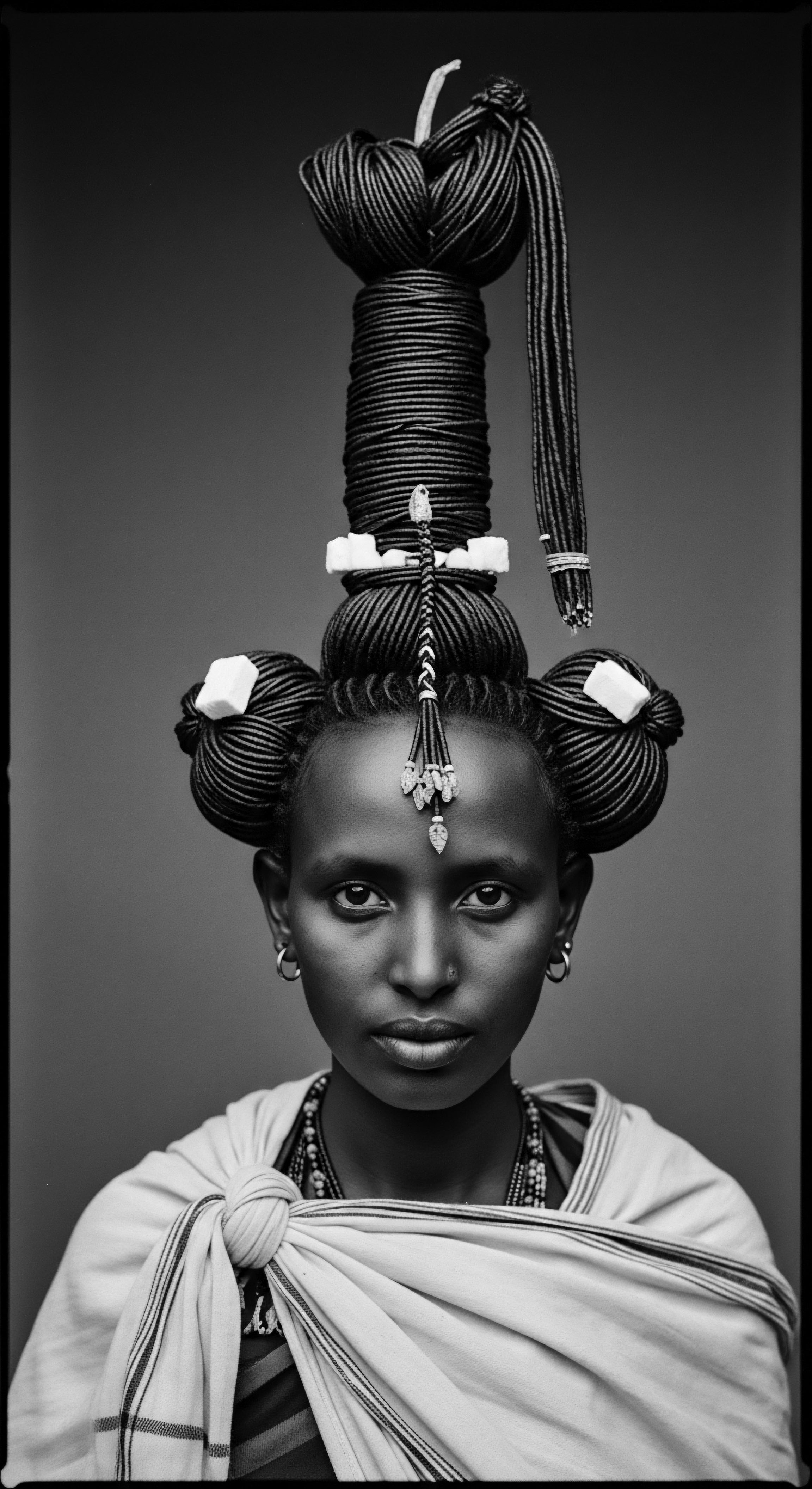
What Traditional Ingredients Sustained Braided Styles?
The longevity and health of these intricate braided styles were supported by centuries of ancestral knowledge concerning natural ingredients. These substances, sourced directly from the earth, provided nourishment, protection, and sheen to textured hair. They were chosen not only for their practical benefits but also for their spiritual or communal significance.
Traditional hair care often involved a synergy of naturally occurring elements. Shea butter, a staple in West African communities, was revered for its moisturizing and healing properties, extracted from the nuts of the Shea tree. It provided a rich, protective barrier for the hair and scalp, particularly important for styles that could remain in place for extended periods. Argan oil, another valued resource, especially in Morocco, was known for its nourishing effects.
Other ingredients included:
- Karkar Oil ❉ Used for its purported benefits in promoting hair growth and maintaining length.
- Black Soap ❉ A traditional cleanser, gentle on both hair and scalp.
- Chebe Powder ❉ Originating from the Northern Chad mountains, this powdered mix of seeds, resins, and oils was famously used by Bassara/Baggara Arab women for hair length retention.
- Sidr Leaves ❉ Ground into a paste for cleansing and conditioning.
- Coconut Oil ❉ Widely used for moisturizing and scalp health across various regions.
- Cocoa Butter ❉ Employed for its deep conditioning and sealing properties.
These ingredients were often mixed into pastes, oils, or creams, meticulously applied to the hair and scalp before, during, and after braiding. Their use underscores a holistic approach to hair care, where the health of the hair was intrinsically linked to natural remedies and a deep understanding of local botanical resources.
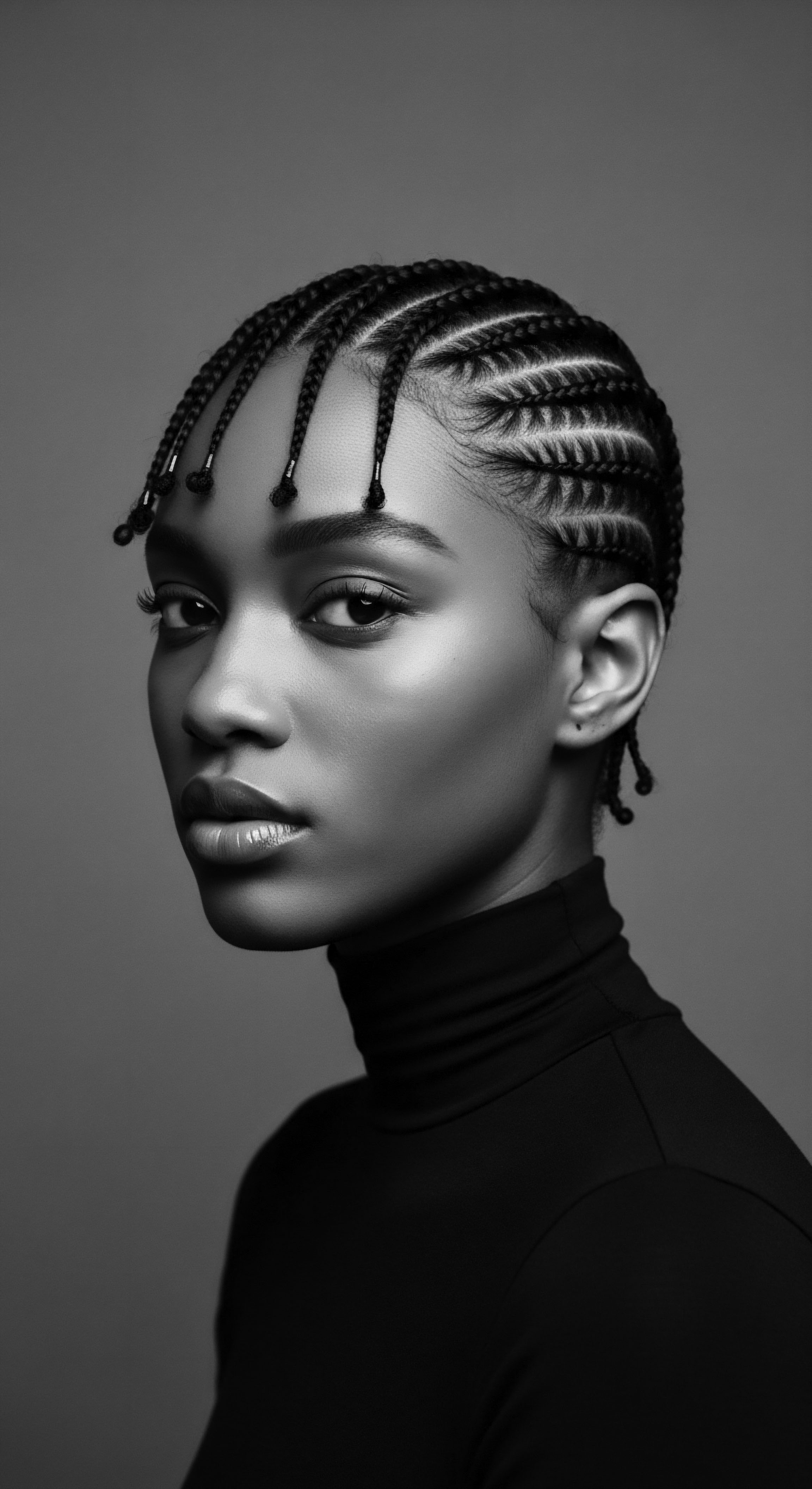
Braids as Channels of Resistance
When the transatlantic slave trade forcibly removed Africans from their homelands, ancient braiding traditions did not perish. Instead, they transformed into powerful tools of resistance and cultural preservation. Stripped of their languages, names, and even their hair upon arrival in the ‘New World,’ enslaved Africans found ways to reclaim fragments of their identity. Hair, resilient as the people who wore it, became a clandestine canvas for communication and a symbol of unwavering heritage.
One particularly poignant example involves the use of braids to conceal information. During the era of slavery, enslaved individuals ingeniously hid seeds, rice, or even maps within their braided styles, a desperate yet brilliant strategy for survival during the perilous Middle Passage or for planning escape routes. Emma Dabiri, in her work on hair, cites instances where slaves concealed signals and maps within their hairstyles, visible yet unintelligible to their oppressors. This transformative use of braids demonstrates a powerful intellectual and cultural agency in the face of dehumanization.
| Historical Function Identification of tribal affiliation, age, and social standing. |
| Contemporary Heritage Echoes A conscious celebration of ancestry and cultural pride. |
| Historical Function Communication of hidden messages, such as escape routes. |
| Contemporary Heritage Echoes A symbol of resistance against hair discrimination. |
| Historical Function Spiritual connection and ceremonial practice. |
| Contemporary Heritage Echoes An expression of personal and collective spiritual well-being. |
| Historical Function Protective styling for hair health in challenging climates. |
| Contemporary Heritage Echoes A recognized method for promoting textured hair growth and health. |
| Historical Function The enduring legacy of braids highlights their adaptability and continuing significance in upholding African heritage and textured hair identity. |
The act of preserving these traditions, even under duress, was a direct counter-narrative to the dehumanizing efforts of enslavers. It was a way to maintain a spiritual and cultural link to Africa, to refuse complete erasure. The meticulous practice of braiding, a skill brought from the continent, became a vital act of self-care and community building in a brutal new world.

Relay
The journey of ancient braids from their African origins to their contemporary global presence represents a powerful relay of cultural knowledge, resilience, and evolving identity. This transmission across centuries and continents underscores not only the aesthetic adaptability of braided styles but also their profound sociological and scientific underpinnings. The legacy of these practices continues to shape understandings of textured hair heritage, inspiring movements for self-acceptance and challenging Eurocentric beauty norms.

From Ancient Tools to Modern Techniques
The techniques of braiding, twisting, and coiling have been handed down with remarkable consistency over millennia. Ancient drawings and artifacts depict methods strikingly similar to those used by skilled braiders today. This continuity speaks to the effectiveness and inherent logic of these traditional practices for managing and protecting textured hair. What began with simple tools—perhaps bone combs, wooden picks, or even fingers—has evolved into a sophisticated array of instruments, yet the fundamental principles remain intact.
The anatomical specificities of textured hair, characterized by its helical curl pattern and elliptical cross-section, make it particularly prone to tangling and breakage if not handled with care. Ancient braiding methods, especially protective styles like cornrows and box braids, offered a solution by minimizing manipulation and keeping strands organized. Modern hair science now affirms what ancestral wisdom instinctively knew ❉ these styles protect the hair shaft from environmental stressors and reduce mechanical damage, thereby promoting length retention and overall hair health.
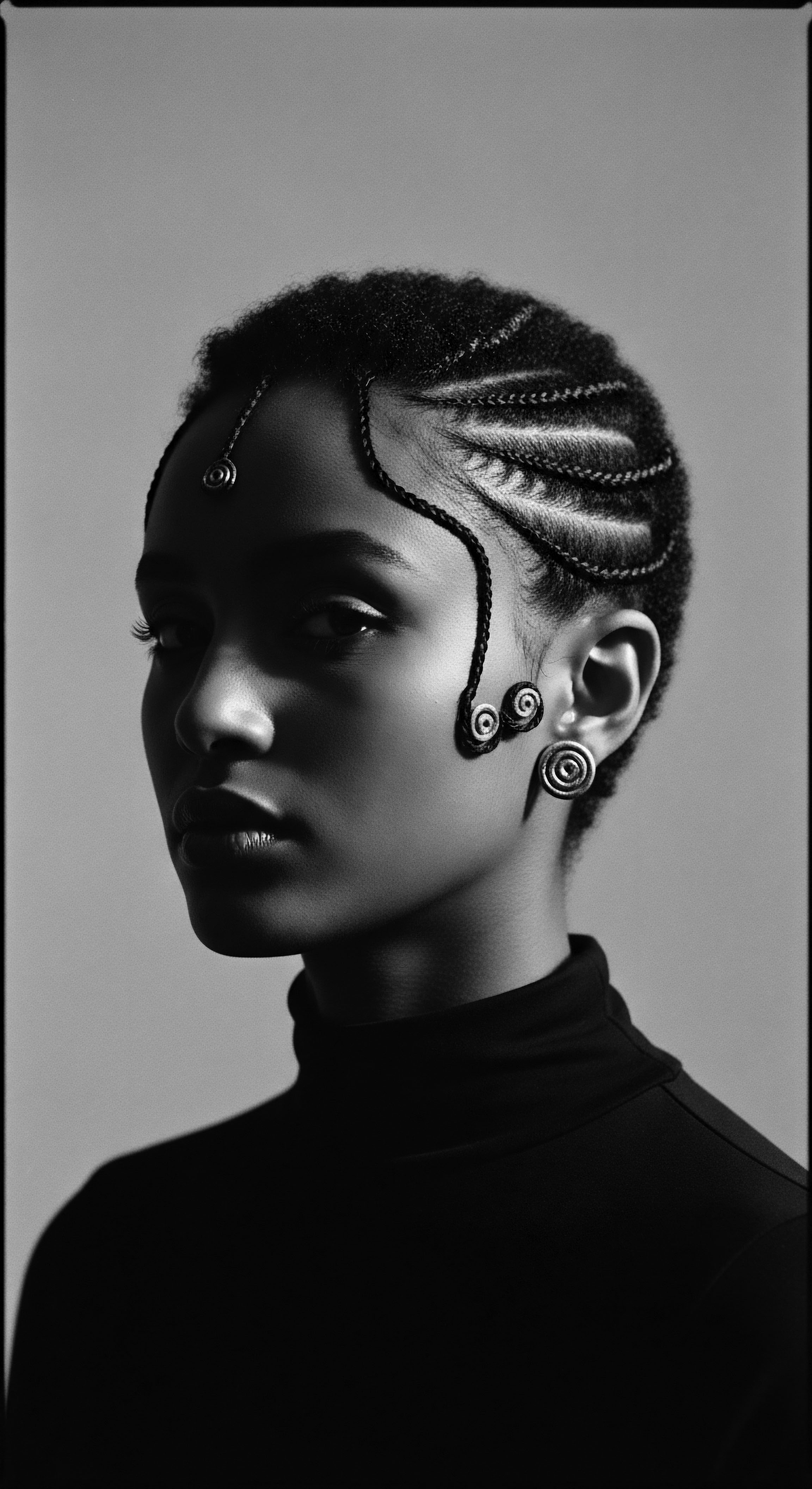
How Did Braids Influence the Natural Hair Movement?
The mid-20th century saw a resurgence of natural hairstyles, including braids, particularly during the Civil Rights and Black Power Movements. This period marked a powerful collective questioning of hair straightening practices and a reclamation of ‘Black is beautiful’ as a standard of aesthetic value. The Afro, a visible symbol of this reawakening, paved the way for broader acceptance and celebration of all natural textured styles, including various forms of braids.
Braids became, and continue to be, a visible declaration of identity, a rejection of imposed beauty ideals, and a connection to ancestral roots. The re-emergence of these styles, deeply rooted in African heritage, allowed individuals to express a collective consciousness and self-define beauty on their own terms. (Byrd and Tharps, 2014) This movement extended beyond aesthetics; it was intrinsically linked to broader socio-political struggles for racial equality and self-determination. The CROWN Act, a contemporary legislative effort to prohibit hair discrimination based on texture or protective styles, serves as a powerful testament to the ongoing relevance of braids in the fight for racial equity.
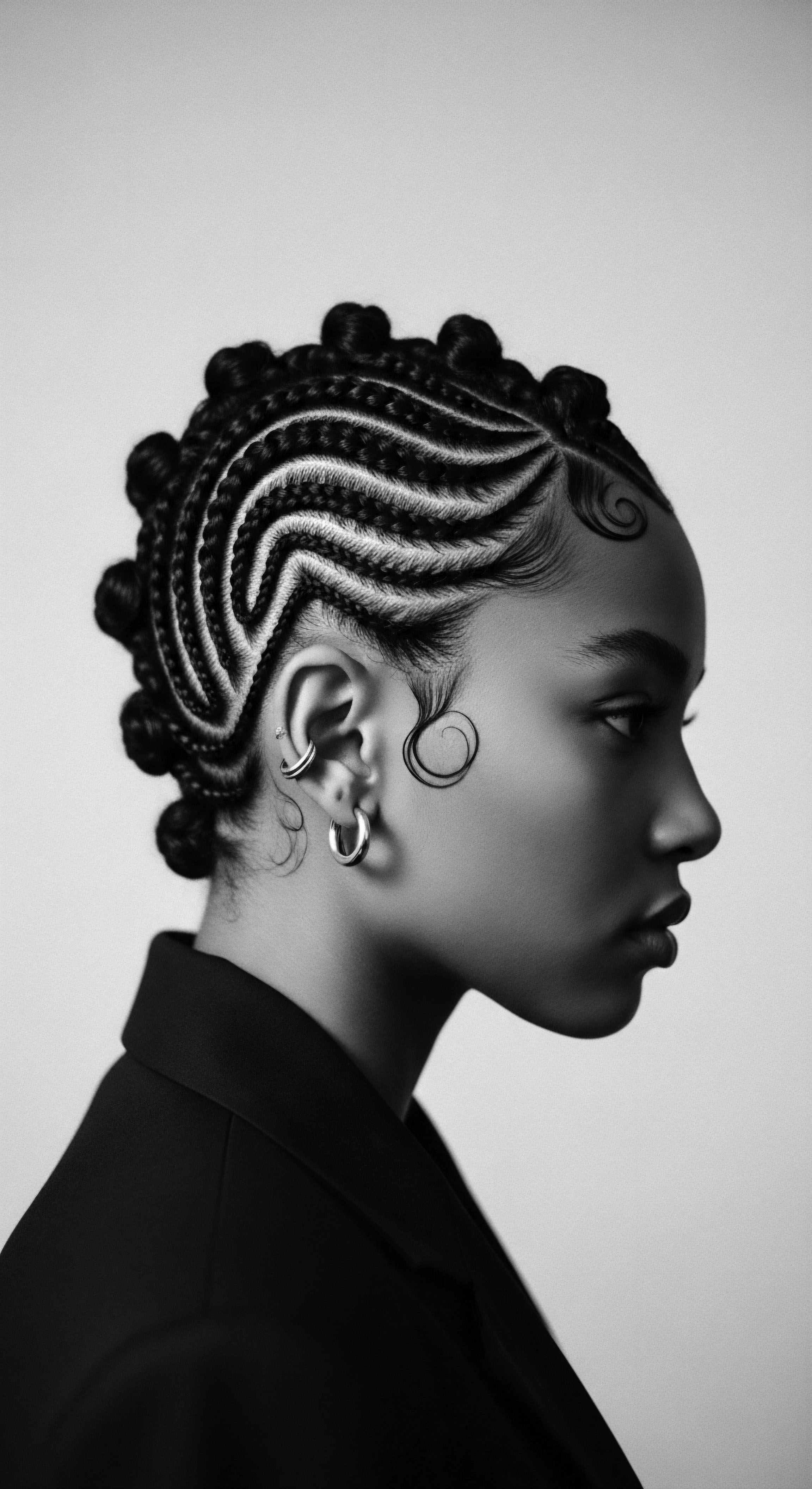
Braids as a Cultural Constant
Despite the profound disruptions of slavery and colonialism, the practice of braiding persisted, adapting and evolving in new environments while retaining its core significance. The story of braids is a story of adaptation. In the diaspora, limited access to traditional tools and products, coupled with harsh labor conditions, led to simpler, more practical styles like cornrows, which themselves held hidden meanings or served as a practical method for hygiene. These styles became an emblem of perseverance, a quiet act of cultural survival in the face of immense pressure to conform to Eurocentric standards.
The influence of African braiding techniques is now global, with styles like box braids and Fulani braids recognized and worn worldwide. The Fulani braids, known for their distinctive central cornrow, loops, and adornments, directly stem from the Fula people of West Africa and the Sahel region, passed down precisely through generations. This widespread adoption demonstrates the universal appeal and versatility of these styles, yet it also underscores the importance of acknowledging their historical and cultural origins, ensuring they are celebrated with respect for their heritage.
The meticulous attention paid to hair in traditional African societies, reflected in the communal rituals and the deep symbolism of braids, finds echoes in modern wellness philosophies. The emphasis on scalp health, moisture retention, and protective styling within textured hair care today aligns remarkably with the ancient practices. Natural oils and butters, once cornerstones of African hair care, are now widely recognized for their benefits in maintaining healthy hair. (Chabalala, Matsabisa, & Gqaleni, 2021) This historical continuity highlights how ancestral wisdom often provides a guiding light for contemporary well-being.

Reflection
The legacy of ancient braids in African heritage flows through generations, a vibrant stream carrying the whispers of ancestors and the strength of a resilient people. Each twist, each plait, each careful sectioning of hair speaks to a profound connection—to family, to community, to spirituality, and to the very earth that nourished the ingredients used in their creation. From the earliest known instances of intricate designs on the heads of ancient African peoples, extending through the harrowing journey of the diaspora, and culminating in the powerful affirmations of modern identity, braids have held an unwavering place. They represent not merely a physical adornment, but a living, breathing archive of wisdom, resistance, and creativity.
The enduring significance of these styles is a testament to the ingenuity of African cultures, a deep understanding of textured hair’s unique biology, and an unyielding spirit in the face of adversity. The knowledge embedded in each braiding technique—whether for protective purposes, communication, or ceremonial display—continues to resonate in the contemporary world. It calls us to look beyond surface appearances and truly see the profound narratives held within each strand, recognizing that the care we give our hair is an act of honoring a heritage that has defied time and circumstance. This connection to the ‘Soul of a Strand’ is a call to remember, to celebrate, and to carry forward the rich, textured story of African hair.
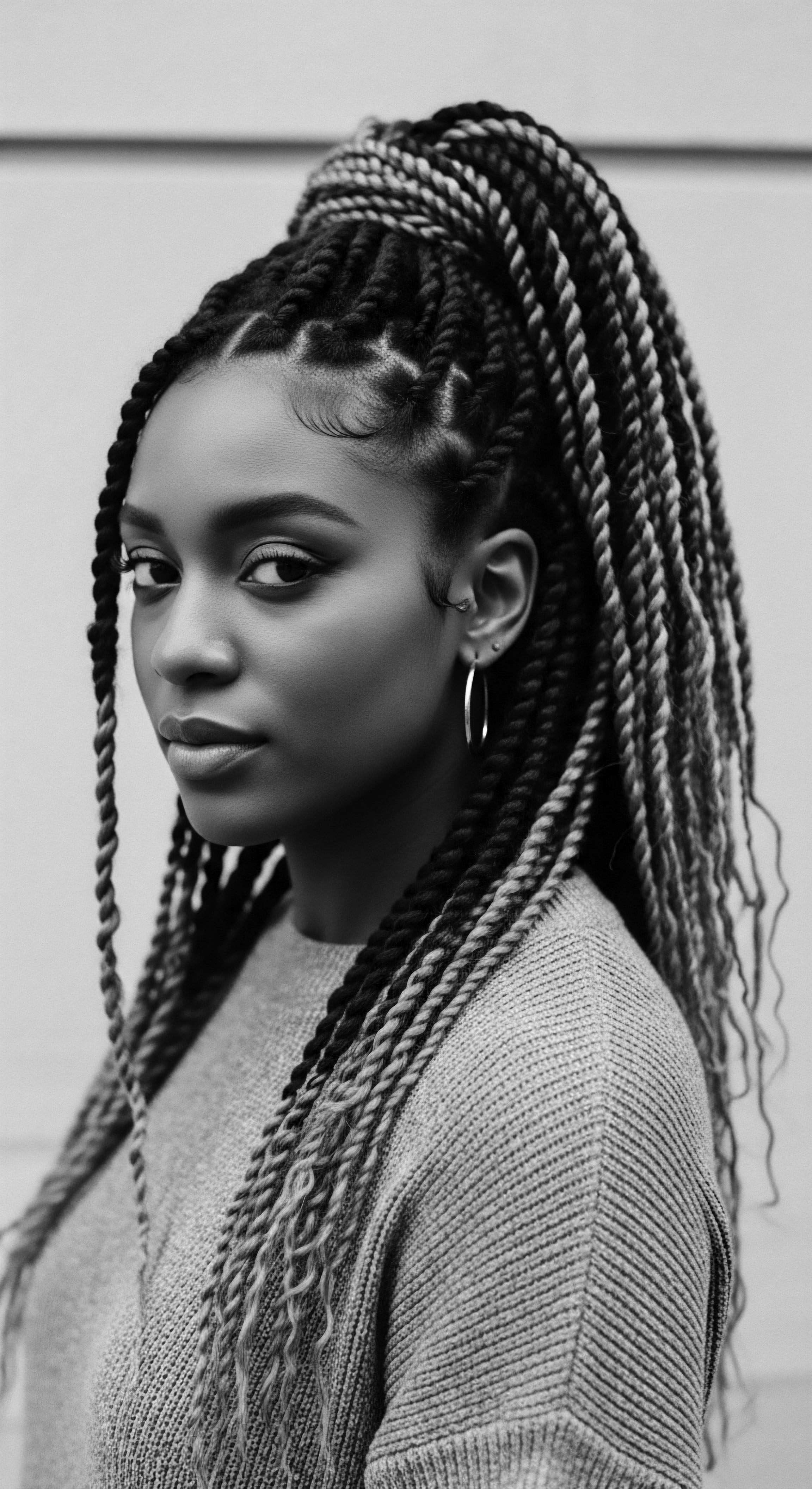
References
- Akanmori, D. (2015). Hair Care ❉ Beauty, Culture, and African American Women.
- Banks, I. (2000). Hair Matters ❉ Beauty, Power, and Black Women’s Consciousness.
- Byrd, A. D. & Tharps, L. L. (2001). Hair Story ❉ Untangling the Roots of Black Hair in America. St. Martin’s Press.
- Chabalala, H. Matsabisa, M. & Gqaleni, N. (2021). African natural medicine ❉ Toward a health preservation theory and systematization model for clinical application. Journal of Traditional Chinese Medical Sciences, 8, S32-S43.
- Dash, J. (2006). Hair Story ❉ The Transformation of Black Hair in America.
- Jacobs-Huey, L. (2006). From the Kitchen to the Salon ❉ Language and Cultural Co-Construction in the African American Beauty Shop.
- Mercer, K. (1994). Welcome to the Jungle ❉ New Positions in Black Cultural Studies.
- Omotos, A. (2018). The symbolism of hair in traditional African culture. Journal of Pan African Studies.
- Patton, T. O. (2006). Brave. Black. Beautiful. ❉ The Politics of Black Hair.
- Rooks, N. (1996). Hair Raising ❉ Beauty, Culture, and African American Women. Rutgers University Press.
- Tatum, B. D. (1997). “Why Are All the Black Kids Sitting Together in the Cafeteria?” ❉ And Other Conversations About Race. Basic Books.
- Thompson, C. (2002). Black Women and Identity ❉ What’s Hair Got to Do With It? University of Michigan.
